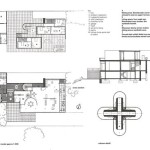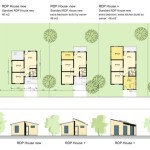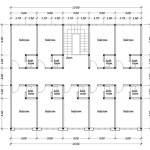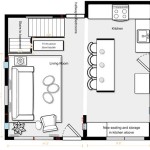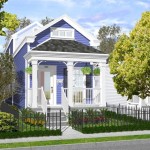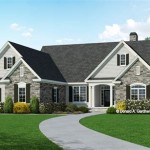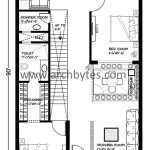Split Level Home Floor Plans: Exploring the Multidimensional Design
Split level homes, characterized by their unique staggered design, have gained popularity for their efficient use of space and dynamic living arrangements. These homes feature multiple levels that are connected by short staircases, creating distinct living zones while maintaining a cohesive flow.
The primary level often comprises the main living areas, including the living room, kitchen, and dining room. This level serves as the central hub for family activities and entertaining guests. The upper level typically houses the bedrooms, ensuring privacy while keeping family members close. The lower level may accommodate additional bedrooms, a family room, or a home office.
Advantages of Split Level Floor Plans:
1. Efficient Space Utilization: Split level homes maximize available space by stacking different living areas on multiple levels. This design allows for more open and spacious rooms without sacrificing living space.
2. Privacy and Separation: The staggered levels provide distinct zones for different functions, creating separate areas for family and guest spaces. This separation enhances privacy while promoting a cohesive flow.
3. Natural Light and Ventilation: The multiple levels in split level homes allow for ample natural light to permeate through windows on different levels. This enhances the energy efficiency of the home and creates a brighter living environment.
Drawbacks of Split Level Floor Plans:
1. Limited Accessibility: The multiple staircases in split level homes can pose accessibility challenges for individuals with limited mobility. These homes may not be suitable for those requiring wheelchair access.
2. Increased Maintenance: The multiple levels and staircases require additional maintenance, including cleaning, repairs, and potential accessibility modifications.
Key Design Considerations for Split Level Homes:
1. Staircase Design: The design of the staircases in a split level home is crucial. They should be wide enough for comfortable use and feature non-slip surfaces for safety. The risers and treads should be appropriately sized to ensure ease of use.
2. Lighting: Proper lighting is essential in split level homes to enhance visibility and create a welcoming atmosphere. Natural light should be maximized through windows on different levels, supplemented by adequate artificial lighting.
3. Flow and Connectivity: The staggered levels should seamlessly connect to create a cohesive living environment. Open sightlines and well-defined circulation paths ensure ease of movement throughout the home.
Conclusion:
Split level home floor plans offer a unique and efficient way to maximize space and create dynamic living arrangements. Their advantages, including efficient space utilization, privacy, and natural light, make them suitable for families and those seeking a contemporary living experience. However, potential drawbacks such as limited accessibility and increased maintenance should be carefully considered before choosing this design. With thoughtful planning and design, split level homes can provide a comfortable, functional, and visually appealing living environment.
Split Level Homes Designs G J Gardner

4 Bedroom Split Level House Plan 2136 Sq Ft 2 Bathroom

Split Level House Plans And Foyer Floor

Familyhomeplans Com Plan Number 45253 Order Code 01web Split Level House Plans Modular Home Floor

Split Level House Plans And Foyer Floor

House Design Plans Idea 7x11 5 With 3 Bedrooms S Split Level Floor Tri

Split Level House Plans Home Design 3266

Modern Split Level House Plans And Multi Floor Plan Designs

Split Level Traditional Home Plan With Mudroom 22171sl Architectural Designs House Plans

Plan 8963ah Split Level Home House Remodeling Plans Floor

